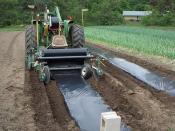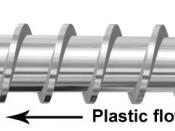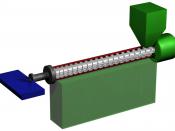I'm just guessing that everyone out there knows what plastic is. We call plastics plastic because they are pliable, that is, they can be shaped and moulded easily. As plastics become easier to mould and shape when they're hot, and melt when they get hot enough, we call them thermoplastics. This name can help you tell them apart from cross-linked materials that don't melt, called thermosets. But like I said, everyone knows what plastic is, so tell you this. Well, there are a few nuances and details of what makes a plastic a plastic that it might be useful to go over. For example, why do we call a material a plastic and not a rubber, or elastomer? The answer is in the bouncing. You can stretch an elastomer, and it bounces back. Plastics tend to either deform permanently, or just plain break, when you stretch them too hard.
But that's not bad.
You see, although plastics don't behave as well as rubber when they're stretched, it takes a lot more energy to stretch them in the first place. The fancy way to say that is "plastics resist deformation better than elastomers do". This is good when we don't want our material to stretch.
At the top of this page we said that plastics were called "plastic" because we could deform them, and mould them. That's just the point. It takes more energy to stretch the plastic, making it resistant to deformation. But at the same time, if you pull hard enough, you can not only stretch a plastic, but it will stay in the shape you stretched it into once you stop stretching it. Elastomers bounce back when you let go.
Plastic Manufacturing Methods
Plastics are made into shapes in many ways:
1. EXTRUSION
Hot molten plastic is squeezed...



Plastics
You have written a highly informative essay on a material that is all around us. Despite the ubiquitous nature of plastic, many people are relatively uninformed about it and your fine essay will be particularly useful in providing needed background information. I learned a great deal from your enlightening discussion of plastic manufacturing methods. Nicely done!
8 out of 8 people found this comment useful.